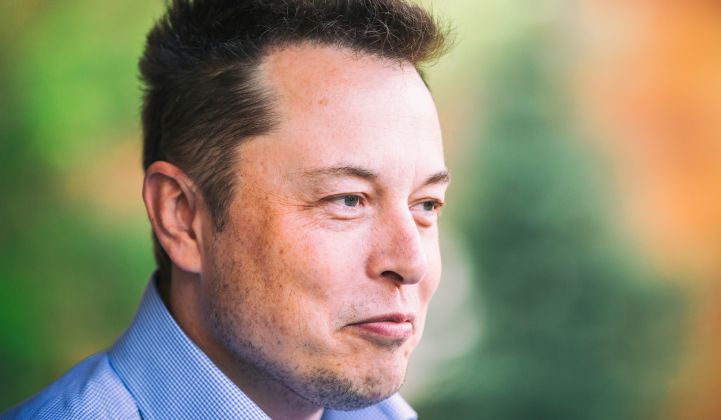Tesla, to the surprise of no one, just raised $1.15 billion in debt and equity to finance the build-out of its Model 3 production and battery factory.
In a release yesterday, the electric-vehicle and battery manufacturer announced "offerings of $250 million of common stock and $750 million aggregate principal amount of convertible senior notes due in 2022 in concurrent underwritten registered public offerings." Additionally, Elon Musk, Tesla's CEO, will buy $25 million of common stock.
If anything, this amount was less than expected, and will likely mean that an additional equity raise will be necessary later on. Barclays had said that a $2.5 billion stock offering wouldn’t be a surprise. Morningstar expected Tesla to raise $3 billion to fund Musk’s ambitions. Tesla expects to spend between $2 billion and $2.5 billion in capital expenditures ahead of the start of Model 3 production in 2017, up from $1.3 billion in 2016. The company has $3.4 billion in cash.
In last week's earnings call, Musk said Tesla has enough capital to reach the market with the Model 3, but its cash situation would be “close to the edge." To reduce the company’s risk, it “probably makes sense to raise more capital."
Tesla intends to build 500,000 vehicles in 2018 and will continue to invest heavily in the tooling, production equipment and construction of the Model 3 production lines and equipment to support cell production at Gigafactory 1, as well as new retail sites, service centers and Supercharger sites.
Tesla will have spent about $10 billion in R&D and capital expenditures since 2014, according to Morgan Stanley. Tesla went through $970 million in cash in the fourth quarter. UBS writes, "Cash burn was bad and is getting worse."
According to UBS, Tesla would need to spend up to an additional $8 billion on its network of charging stations in the U.S. alone "if it wants to make recharging a car as convenient as going to a gas station." Add that to the planned costs for gigafactories, Model 3 investments and costs associated with building a network of service centers, and Tesla might need $35 billion in capex through 2025.
According to CFRA, "The company plans hedging transactions to limit dilution of its common shares. The purpose of the transactions are to improve the balance sheet and support the investments to prepare for the mass-market Tesla Model 3. Lower than expected dilution is a positive, but in our view, risks persist."
Ben Kallo at Baird writes, "We view the offering positively as it should help de-risk the Model 3 launch, provide additional capital for Model 3 production equipment and/or investment in the Gigafactory, and remove an overhang on the stock. Bears will likely say the deal is too small, although we believe this displays TSLA’s confidence in the Model 3 timeline and anticipate shares will move higher."
Tesla stock is up more than 3 percent today.



